This article contains the full text of the Chinese white paper on the Taiwan reunification issue. We also cover various other interesting and curious side issues, stories and themes that have become a staple on MM, such as food and ambulatory fungus. I hope you all enjoy this article.
Muesli

This is my cat. His name is Muesli. He may look cute with his heart shaped blob on his nose, but in reality he is a South London geezer cat who wants to bite me all of the time.
He doesn’t, but he wants to.
He is my boy & I prefer him to most people.
He is also a hopeless cheese addict & even becomes temporarily strokable if given lightly fried fresh mackerel.
He is very spoilt but he deserves to be as he had a rough start in life & would have no doubt been put down at an early age due to his “challenging” behaviour.
I have been his dad for over 10 years now & would not swap him for anything.
Harsh life truth

A taste of America
Check out these views of America…

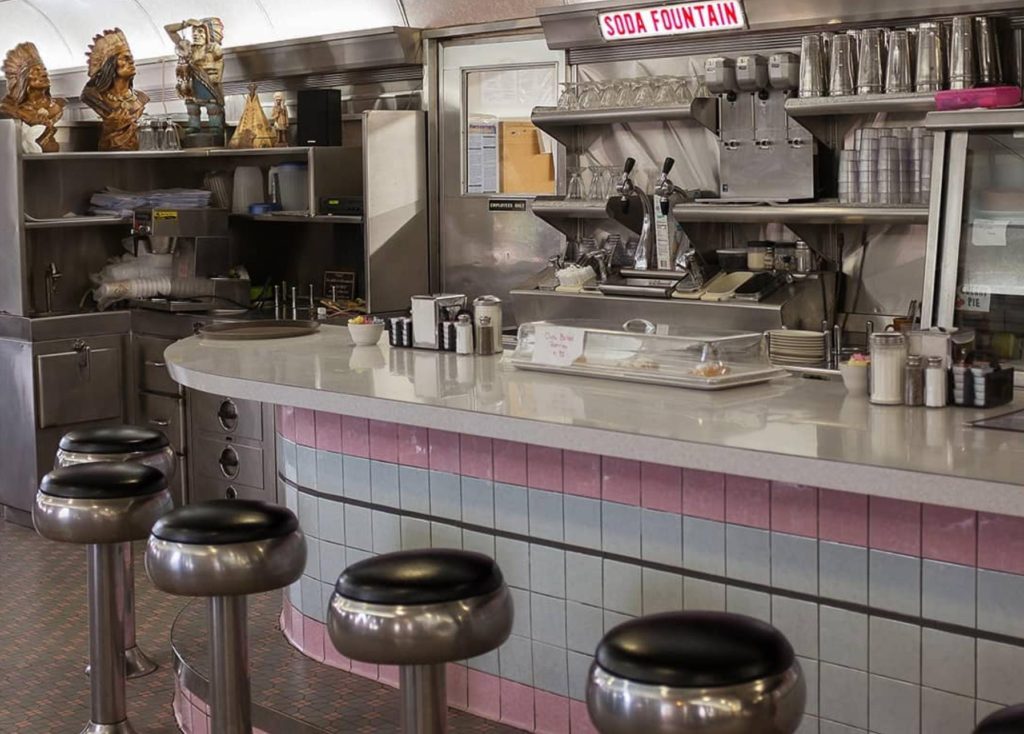

Evaldas Rimasauska
The story of Evaldas Rimasauska’s crazy – but surprisingly successful – plan to steal $120 million from Google and Facebook is worth telling.
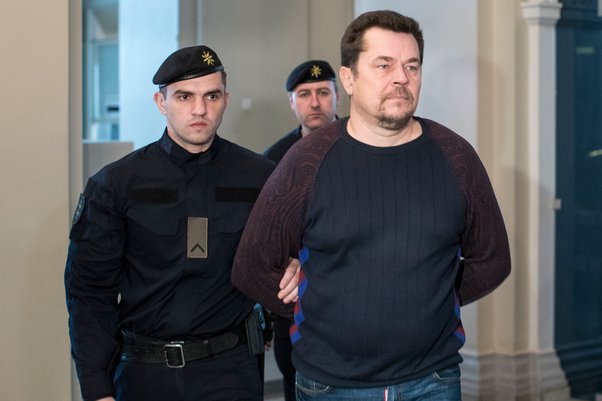
At the start of 2013, Rimasauska registered a company in Latvia called Quanta Computer, which is identical in name to that of a Hardware manufacturing company from Taiwan. A bit suspicious, right?
Then, over a period of two years, he repeatedly sent invoices (complete with fraudulent stamps, signatures, and a very large amount of corporate and legal jargon) to google and Facebook for products from his fake company that he had never sold. Sounds like a pretty stupid idea. Surely a company with some of the best legal and financial minds would just discard these fake invoices?
Well, as you probably guessed, they did not.
Seemingly without questioning it, two of the biggest tech giants around transferred millions and millions to Rimasauka. He’d keep sending them fake invoices, and they would always pay up. Eventually, Rimasauska racked up a lot of cash, taking $23 million from Google and $99 million from Facebook.
He didn’t stay rich for long though.
Almost inevitablely, people soon caught on to him, and he is now spending five years behind bars for wire fraud.
People will always associate financial fraud with large scale, complicated and elaborate schemes — perhaps hacking into servers, or stealing confidential documents. But the interesting thing about this case is it shows that huge companies can still fall victim to such simplistic methods.
Be the Rufus
On a day in 2005, the fifth year in to our fruitful career after a hard time of the past 10 years.
A man called me informing that a very good piece of land was on urgent sale. After I heard about the location I headed towards it, as by coincidence my wife and I were in the city and just nearby. We visited the land.
It was one of many empty lands around there.
We decided to meet the owner, though the price seemed to be a bit of high. But the land seemed potential.
The man was a retired high ranked public servant and genuinely a gentleman, living in his rented apartment. He looked tired and mentally distressed, but my eyes did not miss that he was pretending “all is ok.” The plot on sale is what he got allotted by the government to make his home, as a reward for his lifelong services to the nation.
At the opening on the deal, I asked, “What’s the best price you can offer us, sir?” Very impatiently he responded, “No, I can’t reduce the price at all! You can think over and call me someday later.”
To make the situation easy and light, I curiously asked, “That’s a lot of money, what are you going to do with that much money, sir?”
He could not keep it undisclosed any longer. Very restlessly he uttered, “My 11-year old son is a cancer patient, at early stage. My younger daughter is in Uni. I need lot more than this money.”
We were not ready for such an answer.
My wife and I got just mute, like we had no word to say again. Looked at each other, stunned. Then we got into an awkward silence for few long moments, but that made the man seemingly more impatient.
My wife, a graduate in Marketing in contrast to my liberal arts background, is extra-careful on spending as I occasionally make mistakes (in her definition!). She had warned me on the way that it was she who would negotiate the price and I should just keep quiet! Yeah, it was obviously a big money for us at that stage. Decision had to be very calculative.
Now I set my eyes onto her. But this time she held on in a confused, stubborn silence. A silence I was familiar with, though.
Well, silence is approval, as I took it to be. I turned to the man.
“Well sir, alright, we confirm the deal at your price.”
The gentleman, and the broker at his beside, seemed to be having difficulty to understand my words. He tried to end the meeting up here, “Okay, think and let me know later.”
Now my wife took the lead, “Sir, it’s confirmed. We’ll get the deal go through tomorrow morning itself. Give me your bank details.” He seemed to have fallen from the sky and found the world to be a joke on the ground.
We instructed the broker to prepare the papers the next day and confirmed that we would go to the Registry Office after lunch.
We accomplished the deal that day, as planned.
Almost 13 long years had passed by. As we live in overseas and were very occupied with our occupations, we did not think much about that land through all those years.
During a visit in 2017 to our home country we went to see the land.
All the surrounded lands were now filled with high rise (6–7 stories) residential blocks, the area was now within the Capital City’s extended diplomatic zone.
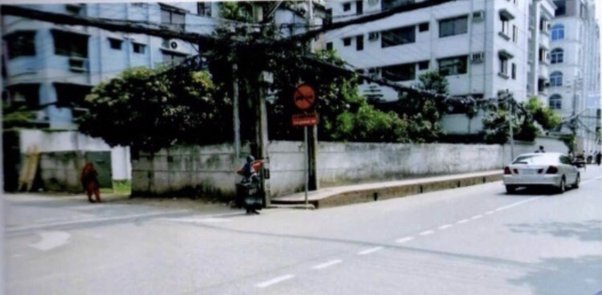
Then US$85,000 land, now valued at more than US$3.5 million.
It is like a holy dust turned to diamond to our luck.
Readers, by the way, you might be anxiously waiting to know what happened with that man and his children at last?
Despite we were busy in overseas, I have kept in touch with him. But I never let him know what led us to make a hasty purchase that day at that high price he demanded. And I really do not wish to spell it here as well. I’d like to let it remain as it has been— a deal, from which wenhave barely benefited, and my two growing children will benefit in their life.
His son recovered from cancer. The daughter completed her university. They are all fine now. The gentleman, Brig. Gen. Khijir Mohammad (rtd.), is now at his 80’s and spends the mornings walking with his friends and most of the rest of his time in gardening.
We wish him a long and healthy life, and all the best for his family.
Brandon Grimshaw

For 13 thousand dollars, Englishman Brandon Grimshaw bought a tiny uninhabited island in the Seychelles and moved there forever. When the Englishman Brandon Grimshaw was under forty, he quit his job as a newspaper editor and started a new life.
By this time, no human had set foot on the island for 50 years. As befits a real Robinson, Brandon found himself a companion from among the natives. His Friday name was René Lafortin. Together with Rene, Brandon began to equip his new home. While René came to the island only occasionally, Brandon lived on it for decades, never leaving. By oneself.
For 39 years, Grimshaw and Lafortin planted 16 thousand trees with their own hands and built almost 5 kilometers of paths. In 2007, Rene Lafortin died, and Brandon was left all alone on the island.
He was 81 years old. He attracted 2,000 new bird species to the island and introduced more than a hundred giant tortoises, which in the rest of the world (including the Seychelles) were already on the verge of extinction. Thanks to Grimshaw’s efforts, the once deserted island now hosts two-thirds of the Seychelles’ fauna. An abandoned piece of land has turned into a real paradise.
A few years ago, the prince of Saudi Arabia offered Brandon Grimshaw $50 million for the island, but Robinson refused. “I don’t want the island to become a favorite vacation spot for the rich. Better let it be a national park that everyone can enjoy.”
And he achieved that in 2008 the island was indeed declared a national park.
Quick Chicken Quesadillas
If you’ve been on the hunt for an easy chicken and cheese quesadilla recipe, congratulations—you’ve found it! With a few simple shortcut ingredients, you can have warm, cheesy and easy chicken quesadillas on the table in less than half an hour. Talk about a fuss-free dinner!

Ingredients
- 6 oz refrigerated cooked Southwest-flavor chicken breast strips (from 9- or 12-oz package)
- 1/2 cup Old El Paso™ Thick ‘n Chunky salsa
- 1 package (11 oz) Old El Paso™ Flour Tortillas for Burritos (8 Count)
- Cooking spray
- 2 cups finely shredded Colby-Monterey Jack cheese blend (8 oz)
- 1/4 cup sour cream
Steps
-
1Cut chicken into bite-size pieces. In small bowl, mix chicken and salsa.
-
2Spray 1 side of 1 tortilla with cooking spray; place sprayed side down on work surface. Layer with one-fourth of the chicken mixture and 1/2 cup of the cheese. Top with another tortilla; spray top of tortilla with cooking spray.
-
3Cook in 10-inch nonstick skillet over medium heat 4 to 6 minutes, carefully turning after 2 minutes, until golden brown. Repeat with remaining tortillas, chicken mixture and cheese. To serve, cut quesadillas into wedges. Serve with sour cream and, if desired, additional salsa.

The Stermer Family
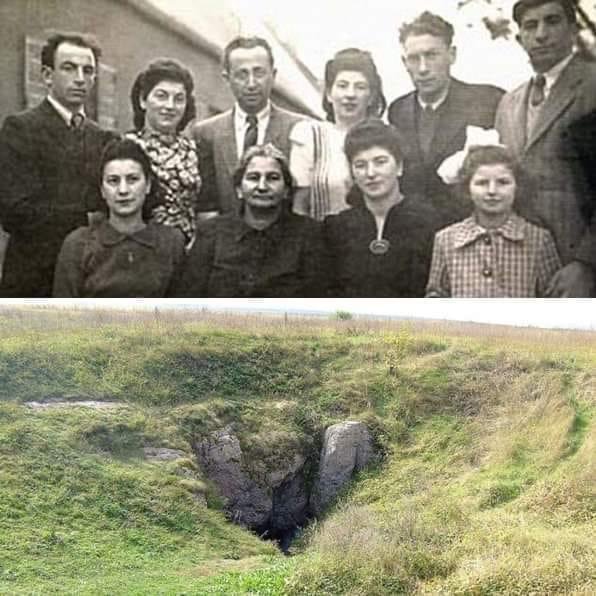
The Germans invaded Ukraine in 1941, and they began to order Jews to the ghettos. Esther Stermer, the matriarch of her family, refused to bring her family into the ghettos. The Stermers lived in Korolowka when the Nazis arrived in fall of 1942. The Gestapo began to force the Jews of the city into trucks to transport them to the concentration camps. Over the next few weeks, the Germans found the remaining Jews left in the city and forced them to dig their graves before killing them.
The Stermers and five families fled the town in the middle of the night and found shelter in a cave. For a year and a half, the families lived underground, hiding from the Germans. In all, thirty-eight people were living in the cave. They stayed hidden during the day, and they would come out at night for food and supplies. Eventually, the Germans found the cave in which they were hiding.
When the Germans found the cave, Esther confronted the soldiers. She reportedly said, “What are you afraid of here? The Fuhrer is going to lose the war because we live here?” The German SS soldiers left the cave and never came back. When the Russians liberated Ukraine in 1944, the families were able to come out of hiding.
The Stermers and the five other families successfully remained in hiding for eighteen months, the longest underground survival event in history. After the war, Esther Stermer wrote a memoir of their experiences called We Fight to Survive.
Photos: The Stermer Family
Bottom: The cave they hid in
Ilha da Queimada Grande
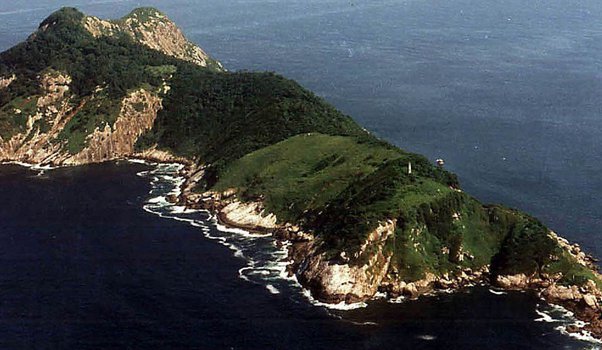
Have a look at Ilha da Queimada Grande. Located in the Atlantic off the coast of Brazil. Looks like a normal island, right? Until I say something.
This island has snakes (it is also called “Snake Island”). And, I mean a lot of snakes; one snake to every metre square. It’s like walking 3 feet and discovering another snake.
What makes it more intimidating is this creature:

The Golden lancehead viper. They are found nowhere else on Earth but here. It is estimated that there are 2,000 to 4,000 of them. Its venom is so strong that human skin can melt when it comes in contact with it.
There is a lighthouse in the island and it is believed that a family used to control it. But, one day the snake entered through open window and the family were bitten to death. Terrifying story just to think of.
Humans are barred to go into the island which is absolutely relevant and valid. I believe we shouldn’t be trying to intrude into the island and disturb their ecosystem. They’re there as they are and so it should be.
Harsh life truth

Growing old
The social worker in charge of my mother’s case told us we had to either place my mother in a locked memory care facility, or she would be involuntarily committed to the state mental hospital.
Mom had tried to run over two police officers with her car and had violently resisted arrest.
She was a danger to herself and to others.
This is Mom during her modeling days.

It all started with a call from a neighbor in the small mountain town where Mom had lived for almost 25 years. Mom’s beautiful home and garden, which had been a feature on the local garden club’s spring tour for years, had become neglected and cluttered in the space of a few months. I live about 4 hours drive from where Mom lived. I visited with my husband and kids or on my own every few months. My mother had always been eccentric. So, when she started behaving in a way that would have been strange for other people, we just thought it was standard Mom eccentric behavior.
I always thought that dementia presented as forgetfulness and confusion. But my mother had a form of dementia called frontotemporal dementia (FTD), that presents with personality changes rather than memory problems. By the time someone with FTD becomes forgetful, the disease has progressed to phase 2. FTD starts much younger than Alzheimer’s or other forms of dementia. Basically, what happens is that the frontal lobe of the brain, which acts kind of like the adult voice in our brain, starts to atrophy. The frontal lobe also plays an important role in creating our personality. The stuff that makes you you in your brain, is destroyed by FTD.
It is difficult to diagnose because it can manifest as early as the forties. Most doctors start considering dementia as a diagnosis only in people over 65, and only look for Alzheimer’s symptoms. People with FTD can look like someone going through a mid-life crisis.
The behaviors FTD produces are so dangerous and often violent, many don’t survive the first phase. If my mother had been anyone but an attractive upper middle class older white woman, I do not know if she would have survived her violent encounter with the cops, or any of the other dangerous situations her FTD created.
After the neighbors called to let me know what was happening, I visited and immediately realized something was wrong. Mom agreed to move close to us. We found her a house nearby, and I somehow convinced her to give me financial power of attorney so I could take care of the real estate transactions. My mother was a widow and I’m an only child. Other than me, her only family is her brother in Kansas.
It took many trips to the emergency room after she moved to her house near us before a doctor finally recommended we see a neuropsychiatrist. Mom had a CT Scan after a fall that showed significant atrophy of the frontal lobe. By the time we finally got a diagnosis about a year after she moved, Mom was in the advanced phase of FTD. The doctor who diagnosed her told us the following:
- Someone with the level of FTD my mother had was incapable of making adult decisions.
- telling her about her diagnosis would be counter productive. Her memory was still intact, so she would remember the diagnosis and be upset and confused by it.
- She needed daily care, which would quickly turn into 24/7 care. At that point, I would not consider memory care or assisted living. But the doctor said that was coming, and coming fast.
- as bad as things were at that moment, they were about to get a million times worse.
My beautiful mother who had been a renowned hostess and fundraiser for charity, had turned into a kleptomaniac who cursed like a sailor and had a thing for handsome Black guys in their twenties. I cannot imagine how awful it must have been for these young guys who are just doing their jobs or walking down the street to be sexually harassed by someone’s grandma. She was violent, mean, profane, and inappropriate on every level.
I want to note here that even as our country and society seems to be devolving into nastiness, everyone we encountered while Mom was in her FTD crazy town phase as I called it, was wonderful. The cashiers at Walmart who understood when I brought back plants she had stolen. The young man who worked in hospital billing who was just trying to do his job while Mom hit on him, was kind and understanding. The sales lady who did not make a fuss when I returned the $200 cashmere scarf Mom had stolen. The cops who picked her up wandering the country roads in our town. The staff and customers in the coffee shop where Mom let loose a string of profanity at me in front of my kids and other families that would make a gangster rapper blush, were so kind when I explained about FTD.
Even the young police officer who cried on my shoulder about how hard he tried not to hurt her while she attacked him, was wonderful. He was covered with bruises and scratches and my mother did not have a scratch on her. He and his partner had pulled over Mom for driving erratically. She tried to run them over with her car when they asked her to get out. Then when she finally got out, she fought them hard, biting and scratching and kicking.
After the trying to kill the cops incident, the social workers at UNC told us it was 2 weeks of memory care or the state hospital. She was in the UNC psychiatric ER for 72 hours on an involuntary hold and released to memory care. I still didn’t want to take her out of her home after her mandated two weeks in memory care were over. I know. Who’s the crazy one here? So, we hired 24/7 nurses. Mom was so violent and aggressive and sexual, I could not have her living with us and our young children. The nurses lasted a couple of months. But Mom was violent with them and snuck out while they were sleeping multiple times.
Finally, here is the answer to the question about how I made my decision to send Mom to a facility:
- the social worker at UNC kept following up and telling me she needed locked memory care.
- the social worker assigned to us in Chatham county where her house was told us Mom needed locked memory care.
- the 911 dispatcher called me after our fourth wandering pickup and said we needed locked memory care.
- the cops who dropped her off after she had been wandering told us she needed locked memory care.
- I started seeing a therapist at the recommendation of Mom’s neuropsychiatrist. She told me Mom would not be safe without memory care. She also told me that I needed to prioritize the health and safety of my children and myself. Mom was taking all my energy, emotional bandwidth and time.
Honestly, it was not until the therapist told me how this was hurting my children that things finally clicked for me. Mom’s care took so much out of me. I was a mess and unable to parent well. Looking back, I wish I had placed her in memory care once we had the diagnosis. But I don’t know how I could have done it. She would have acted out violently if I tried. And I still wanted to keep her in her home. Mom was fiercely independent and always needed a lot of alone quiet time. Being in a group facility would have been her worst nightmare before the FTD hijacked her brain. By the time she got there, I’m not sure she understood where she was or why.
After 18 months in a lovely memory care facility that cost $9,400/month, Mom passed this April. I try to remember the beautiful eccentric brilliant person who raised me. FTD took her away years before she died.
I don’t have any advice beyond remembering that you have to value your kids and your family and yourself as much as you value your loved one who needs care beyond what can be provided at home. Safety is the first priority for everyone. I hope she would approve of the decisions I made. None of it easy. None of it.
Some views of America

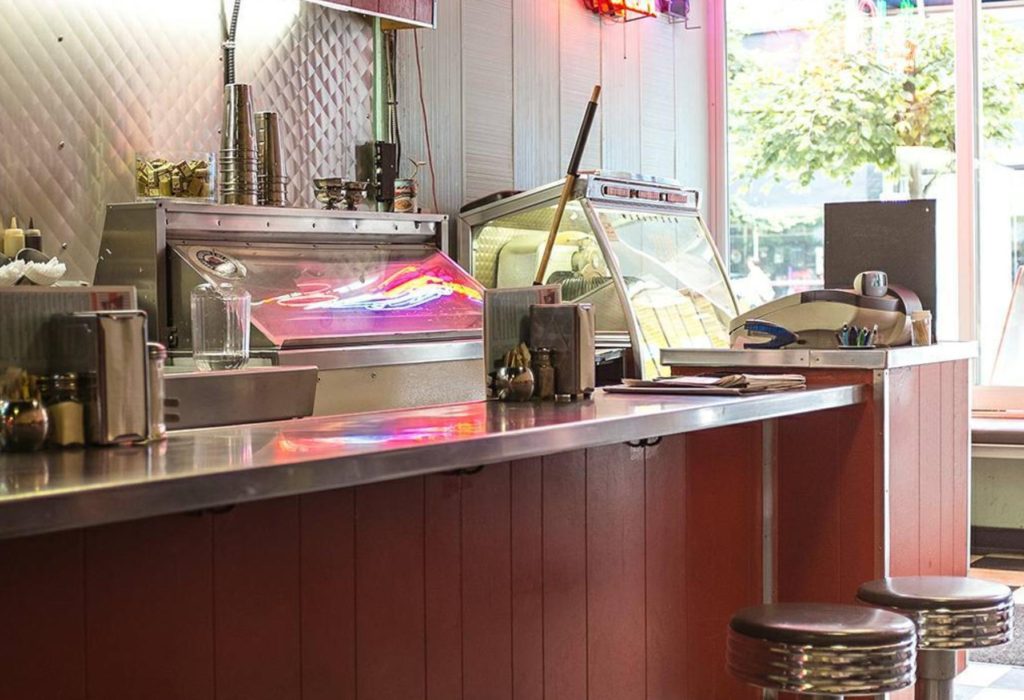


Full text: China’s white paper on Taiwan and reunification
BEIJING – The Taiwan Affairs Office of the State Council and the State Council Information Office of the People’s Republic of China published a white paper titled “The Taiwan Question and China’s Reunification in the New Era” on Wednesday.
The following is the full text of the white paper:
The Taiwan Question and China’s Reunification in the New Era
The People’s Republic of China
The Taiwan Affairs Office of the State Council and The State Council Information Office
August 2022
Contents
Preamble I. Taiwan Is Part of China - This Is an Indisputable Fact II. Resolute Efforts of the CPC to Realize China's Complete Reunification III. China's Complete Reunification Is a Process That Cannot Be Halted IV. National Reunification in the New Era V. Bright Prospects for Peaceful Reunification Conclusion
Preamble
Resolving the Taiwan question and realizing China’s complete reunification is a shared aspiration of all the sons and daughters of the Chinese nation. It is indispensable for the realization of China’s rejuvenation. It is also a historic mission of the Communist Party of China (CPC). The CPC, the Chinese government, and the Chinese people have striven for decades to achieve this goal.
The 18th National Congress of the CPC in 2012 heralded a new era in building socialism with Chinese characteristics. Under the strong leadership of the CPC Central Committee with Xi Jinping at the core, the CPC and the Chinese government have adopted new and innovative measures in relation to Taiwan. They have continued to chart the course of cross-Straits relations, safeguard peace and stability across the Taiwan Straits, and promote progress towards national reunification. However, in recent years the Taiwan authorities, led by the Democratic Progressive Party (DPP), have redoubled their efforts to divide the country, and some external forces have tried to exploit Taiwan to contain China, prevent the Chinese nation from achieving complete reunification, and halt the process of national rejuvenation.
The CPC has united the Chinese people and led them in fulfilling the First Centenary Goal of building a moderately prosperous society in all respects as scheduled, and in embarking on a new journey towards the Second Centenary Goal of building China into a modern socialist country.
The Chinese nation has achieved a historic transformation from standing upright to becoming prosperous and growing in strength, and national rejuvenation is driven by an unstoppable force. This marks a new starting point for reunification.
The Chinese government has published two previous white papers on Taiwan. One was The Taiwan Question and Reunification of China in August 1993, and the other was The One-China Principle and the Taiwan Issue in February 2000. These two white papers provided a comprehensive and systematic elaboration of the basic principles and policies regarding the resolution of the Taiwan question. This new white paper is being released to reiterate the fact that Taiwan is part of China, to demonstrate the resolve of the CPC and the Chinese people and their commitment to national reunification, and to emphasize the position and policies of the CPC and the Chinese government in the new era.
I. Taiwan Is Part of China – This Is an Indisputable Fact
Taiwan has belonged to China since ancient times. This statement has a sound basis in history and jurisprudence. New archeological discoveries and research findings regularly attest to the profound historical and cultural ties between the two sides of the Taiwan Straits. A large number of historical records and annals document the development of Taiwan by the Chinese people in earlier periods.
The earliest references to this effect are to be found, among others, in Seaboard Geographic Gazetteer compiled in the year 230 by Shen Ying of the State of Wu during the Three Kingdoms Period. The royal court of the Sui Dynasty had on three occasions sent troops to Taiwan, called Liuqiu at that time. Starting from the Song and Yuan dynasties, the imperial central governments of China all set up administrative bodies to exercise jurisdiction over Penghu and Taiwan.
In 1624, Dutch colonialists invaded and occupied the southern part of Taiwan. In 1662, General Zheng Chenggong, hailed as a national hero, led an expedition and expelled them from the island. Subsequently, the Qing court gradually set up more administrative bodies in Taiwan. In 1684, a Taiwan prefecture administration was set up under the jurisdiction of Fujian Province. In 1885, Taiwan’s status was upgraded and it became the 20th province of China.
In July 1894, Japan launched a war of aggression against China. In April 1895, the defeated Qing government was forced to cede Taiwan and the Penghu Islands to Japan. During the Chinese People’s War of Resistance Against Japanese Aggression (1931-1945), China’s Communists called for the recovery of Taiwan. Talking with American journalist Nym Wales on May 15, 1937, Mao Zedong said that China’s goal was to achieve a final victory in the war – a victory that would recover the occupied Chinese territories in Northeast China and to the south of the Shanhai Pass, and secure the liberation of Taiwan.
On December 9, 1941, the Chinese government issued a declaration of war against Japan, and proclaimed that all treaties, conventions, agreements, and contracts regarding relations between China and Japan had been abrogated, and that China would recover Taiwan and the Penghu Islands.
The Cairo Declaration issued by China, the United States and the United Kingdom on December 1, 1943 stated that it was the purpose of the three allies that all the territories Japan had stolen from China, such as Northeast China, Taiwan and the Penghu Islands, should be restored to China.
The Potsdam Proclamation was signed by China, the United States and the United Kingdom on July 26, 1945, and subsequently recognized by the Soviet Union. It reiterated: “The terms of the Cairo Declaration shall be carried out.” In September of the same year, Japan signed the instrument of surrender, in which it promised that it would faithfully fulfill the obligations laid down in the Potsdam Proclamation. On October 25 the Chinese government announced that it was resuming the exercise of sovereignty over Taiwan, and the ceremony to accept Japan’s surrender in Taiwan Province of the China war theater of the Allied powers was held in Taibei (Taipei). From that point forward, China had recovered Taiwan de jure and de facto through a host of documents with international legal effect.
On October 1, 1949, the People’s Republic of China (PRC) was founded, becoming the successor to the Republic of China (1912-1949), and the Central People’s Government became the only legitimate government of the whole of China. The new government replaced the previous KMT regime in a situation where China, as a subject under international law, did not change and China’s sovereignty and inherent territory did not change. As a natural result, the government of the PRC should enjoy and exercise China’s full sovereignty, which includes its sovereignty over Taiwan.
As a result of the civil war in China in the late 1940s and the interference of external forces, the two sides of the Taiwan Straits have fallen into a state of protracted political confrontation. But the sovereignty and territory of China have never been divided and will never be divided, and Taiwan’s status as part of China’s territory has never changed and will never be allowed to change.
At its 26th session in October 1971, the United Nations General Assembly adopted Resolution 2758, which undertook “to restore all its rights to the People’s Republic of China and to recognize the representatives of its Government as the only legitimate representatives of China to the United Nations, and to expel forthwith the representatives of Chiang Kai-shek from the place which they unlawfully occupy at the United Nations and in all the organizations related to it”. This resolution settled once and for all the political, legal and procedural issues of China’s representation in the UN, and it covered the whole country, including Taiwan. It also spelled out that China has one single seat in the UN, so there is no such thing as “two Chinas” or “one China, one Taiwan”.
The specialized agencies of the UN later adopted further resolutions restoring to the PRC its lawful seat and expelling the representatives of the Taiwan authorities. One of these is Resolution 25.1 adopted at the 25th World Health Assembly in May 1972. It was clearly stated in the official legal opinions of the Office of Legal Affairs of the UN Secretariat that “the United Nations considers ‘Taiwan’ as a province of China with no separate status”, and the “‘authorities’ in ‘Taipei’ are not considered to… enjoy any form of government status”. At the UN the island is referred to as “Taiwan, Province of China”[1].
Resolution 2758 is a political document encapsulating the one-China principle whose legal authority leaves no room for doubt and has been acknowledged worldwide. Taiwan does not have any ground, reason, or right to join the UN, or any other international organization whose membership is confined to sovereign states.
In recent years some elements in a small number of countries, the US foremost among them, have colluded with forces in Taiwan, to falsely claim that the resolution did not conclusively resolve the issue of Taiwan’s representation. Puffing up the illegal and invalid Treaty of San Francisco[2] and disregarding the Cairo Declaration, the Potsdam Proclamation and other international legal documents, they profess that the status of Taiwan has yet to be determined, and declare their support for “Taiwan’s meaningful participation in the UN system”. What they are actually attempting to do is to alter Taiwan’s status as part of China and create “two Chinas” or “one China, one Taiwan” as part of a political ploy – using Taiwan to contain China. These actions in violation of Resolution 2758 and international law are a serious breach of political commitments made by these countries. They damage China’s sovereignty and dignity, and treat the basic principles of international law with contempt. The Chinese government has condemned and expressed its resolute opposition to them.
The one-China principle represents the universal consensus of the international community; it is consistent with the basic norms of international relations. To date, 181 countries including the United States have established diplomatic relations with the PRC on the basis of the one-China principle. The China-US Joint Communique on the Establishment of Diplomatic Relations, published in December 1978, states: “The Government of the United States of America acknowledges the Chinese position that there is but one China and Taiwan is part of China.” It also states: “The United States of America recognizes the Government of the People’s Republic of China as the sole legal Government of China. Within this context, the people of the United States will maintain cultural, commercial, and other unofficial relations with the people of Taiwan.”
The Constitution of the People’s Republic of China, adopted at the Fifth Session of the Fifth National People’s Congress (NPC) in December 1982, stipulates: “Taiwan is part of the sacred territory of the People’s Republic of China. It is the inviolable duty of all Chinese people, including our compatriots in Taiwan, to accomplish the great task of reunifying the motherland.”
The Anti-Secession Law, adopted at the Third Session of the 10th NPC in March 2005, stipulates: “There is only one China in the world. Both the mainland and Taiwan belong to one China. China’s sovereignty and territorial integrity brook no division. Safeguarding China’s sovereignty and territorial integrity is the common obligation of all Chinese people, the Taiwan compatriots included. Taiwan is part of China. The state shall never allow the ‘Taiwan independence’ secessionist forces to make Taiwan secede from China under any name or by any means.”
The National Security Law, adopted at the 15th meeting of the Standing Committee of the 12th NPC in July 2015, stipulates: “The sovereignty and territorial integrity of China brook no violation or separation. Safeguarding national sovereignty, unity and territorial integrity is the common duty of all Chinese citizens, including Hong Kong, Macao and Taiwan compatriots.”
We are one China, and Taiwan is part of China. This is an indisputable fact supported by history and the law. Taiwan has never been a state; its status as part of China is unalterable. Any attempt to distort these facts and dispute or deny the one-China principle will end in failure.
II. Resolute Efforts of the CPC to Realize China’s Complete Reunification
The CPC has always been dedicated to working for the wellbeing of the Chinese people and the rejuvenation of the Chinese nation. Soon after its founding in 1921, the CPC set itself the goal of freeing Taiwan from colonial rule, reuniting it with the rest of the country and liberating the whole nation, including compatriots in Taiwan. It has made a tremendous effort to achieve this goal.
The CPC is committed to the historic mission of resolving the Taiwan question and realizing China’s complete reunification. Under its resolute leadership, people on both sides of the Taiwan Straits have worked together to de-escalate tension across the Straits. They have set out on a path of peaceful development and made many breakthroughs in improving cross-Straits relations.
After the founding of the PRC in 1949, China’s Communists, under the leadership of Mao Zedong, proposed the essential guideline, underlying principle, and basic policy for peaceful settlement of the Taiwan question. The CPC prepared and worked for the liberation of Taiwan, thwarted the Taiwan authorities’ plans to attack the mainland, and foiled attempts to create “two Chinas” and “one China, one Taiwan”. Through their efforts, the lawful seat and rights of the PRC in the United Nations were restored and the one-China principle was subscribed to by the majority of countries, laying important groundwork for peaceful reunification. The CPC central leadership established high-level contact with the Taiwan authorities through proper channels in pursuit of a peaceful solution to the Taiwan question.
Following the Third Plenary Session of the 11th CPC Central Committee in 1978, with the establishment of diplomatic relations between the PRC and the United States, China’s Communists, led by Deng Xiaoping, defined the fundamental guideline for peaceful reunification in the vital interests of the country and the people and on the basis of the consensus for peaceful settlement of the Taiwan question. The CPC introduced the creative and well-conceived concept of One Country, Two Systems, and applied it first in resolving the questions of Hong Kong and Macao. It took action to ease military confrontation across the Taiwan Straits, restore contact, and open up people-to-people exchanges and cooperation, opening a new chapter in cross-Straits relations.
After the Fourth Plenary Session of the 13th CPC Central Committee in 1989, China’s Communists, led by Jiang Zemin, made eight proposals for the development of cross-Straits relations and the peaceful reunification of China[3]. The CPC facilitated agreement across the Straits on the 1992 Consensus, which embodies the one-China principle. It initiated cross-Straits consultations and negotiations, resulting in the first talks between heads of the non-governmental organizations authorized by the two sides of the Straits, and expanded cross-Straits exchanges and cooperation in various fields. The CPC took firm action against separatist activities led by Lee Teng-hui, and struck hard at the separatist forces seeking “Taiwan independence”. It ensured the smooth return of Hong Kong and Macao to China, and applied the policy of One Country, Two Systems, which had a constructive impact on the settlement of the Taiwan question.
After the 16th CPC National Congress in 2002, China’s Communists, led by Hu Jintao, highlighted the importance of peaceful development of cross-Straits relations. The CPC pushed for the enactment of the Anti-Secession Law to curb separatist activities in Taiwan, hosted the first talks between the leaders of the CPC and the Kuomintang in six decades since 1945, and defeated attempts by Chen Shui-bian to fabricate a legal basis for “independence”. The CPC effected profound changes in moving the peaceful development of cross-Straits relations forward by promoting institutionalized consultations and negotiations that produced fruitful results, establishing overall direct two-way links in mail, business and transport, and facilitating the signing and implementation of the Economic Cooperation Framework Agreement.
After the 18th CPC National Congress in 2012, China’s Communists, under the leadership of Xi Jinping, took a holistic approach to cross-Straits relations in keeping with changing circumstances, added substance to the theory on national reunification and the principles and policies concerning Taiwan, and worked to keep cross-Straits relations on the right track. The CPC developed its overall policy for resolving the Taiwan question in the new era, and set out the overarching guideline and a program of action.
At its 19th National Congress in October 2017, the CPC affirmed the basic policy of upholding One Country, Two Systems and promoting national reunification, and emphasized its resolve never to allow any person, any organization, or any political party, at any time or in any form, to separate any part of Chinese territory from China.
In January 2019, Xi Jinping, general secretary of the CPC Central Committee and president of China, addressed a meeting marking the 40th anniversary of the release of the Message to Compatriots in Taiwan. In his speech, Xi Jinping proposed major policies to advance the peaceful development of cross-Straits relations and the peaceful reunification of China in the new era. These are: first, working together to promote China’s rejuvenation and its peaceful reunification; second, seeking a Two Systems solution to the Taiwan question and making innovative efforts towards peaceful reunification; third, abiding by the one-China principle and safeguarding the prospects for peaceful reunification; fourth, further integrating development across the Straits and consolidating the foundations for peaceful reunification; fifth, forging closer bonds of heart and mind between people on both sides of the Straits and strengthening joint commitment to peaceful reunification.
The CPC and the Chinese government have thereby adopted a series of major measures for charting the course of cross-Straits relations and realizing China’s peaceful reunification:
– The CPC and the Chinese government have facilitated the first meeting and direct dialogue between leaders of the two sides since 1949, raising exchanges and interactions to new heights, opening up a new chapter, and creating new space for cross-Straits relations. This is a new milestone. The departments in charge of cross-Straits affairs on both sides have established regular contact and communication mechanisms on a common political foundation, and the heads of the two departments have exchanged visits and set up hotlines.
– Upholding the one-China principle and the 1992 Consensus, the CPC and the Chinese government have facilitated exchanges between political parties across the Straits, and conducted dialogues, consultations, and in-depth exchanges of views on cross-Straits relations and the future of the Chinese nation with relevant political parties, organizations, and individuals in Taiwan. These efforts have resulted in consensus on multiple issues, and promoted a number of joint initiatives exploring the Two Systems solution to the Taiwan question with all sectors of Taiwan society.
– Guided by the conviction that people on both sides of the Taiwan Straits are of the same family, the CPC and the Chinese government have promoted peaceful development of cross-Straits relations and integrated development of the two sides for the benefit of both the mainland and Taiwan. We have also refined the institutional arrangements, policies and measures to promote cross-Straits exchanges and cooperation, designed to advance the wellbeing of the people of Taiwan. These include the delivery of water from the coastal province of Fujian to Kinmen Island, electronic travel passes for Taiwan residents to enter or leave the mainland, residence permits for Taiwan residents, progressively ensuring that Taiwan compatriots have equal access to public services so as to facilitate their studying, starting businesses, working and living on the mainland, and an ongoing effort to pave the way for Taiwan to benefit first from the mainland’s development opportunities.
– While countering interference and obstruction from separatist forces, the CPC and the Chinese government have called on the people of Taiwan to promote effective and in-depth cooperation and people-to-people exchanges in various fields across the Straits. Having overcome the impact of COVID-19, we have held a number of exchange events such as the Straits Forum, and maintained the momentum of cross-Straits exchanges and cooperation.
– Resolute in defending state sovereignty and territorial integrity and opposing separatist activities and external interference, the CPC and the Chinese government have safeguarded peace and stability in the Taiwan Straits and the fundamental interests of the Chinese nation. We have taken lawful action against and effectively deterred separatist forces. We have handled Taiwan’s external exchanges in a sound manner, and consolidated the international community’s commitment to the one-China principle.
Under the guidance of the CPC, great progress has been made in cross-Straits relations over the past seven decades, especially since the estrangement between the two sides was ended. Increased exchanges, broader cooperation and closer interactions have brought tangible benefits to people across the Straits, especially of Taiwan. This fully demonstrates that cross-Straits amity and cooperation are mutually beneficial.
The volume of cross-Straits trade was only US$46 million in 1978. It rose to US$328.34 billion in 2021, up by a factor of more than 7,000. The mainland has been Taiwan’s largest export market for the last 21 years, generating a large annual surplus for the island. The mainland is also the largest destination for Taiwan’s off-island investment. By the end of 2021 Taiwan businesses had invested in almost 124,000 projects on the mainland, to a total value of US$71.34 billion[4].
In 1987 less than 50,000 visits were made between the two sides; by 2019 this number had soared to about 9 million. In the past three years, affected by COVID-19, online communication has become the main form of people-to-people interactions across the Straits, and the numbers of people participating in and covered by online communication are reaching new highs.
The CPC has always been the spine of the Chinese nation, exercising strong leadership in realizing national rejuvenation and reunification. Its consistent efforts over the decades to resolve the Taiwan question and achieve complete national reunification are based on the following:
First, the one-China principle must be upheld, and no individual or force should be allowed to separate Taiwan from China.
Second, it is imperative to strive for the wellbeing of all Chinese people, including those in Taiwan, and to realize the aspirations of all Chinese people for a better life.
Third, we must follow the principles of freeing the mind, seeking truth from facts, maintaining the right political orientation, and breaking new ground, and defend the fundamental interests of the nation and the core interests of the state in formulating principles and policies on work related to Taiwan.
Fourth, it is necessary to have the courage and skill to fight against any force that attempts to undermine China’s sovereignty and territorial integrity or stands in the way of its reunification.
Fifth, extensive unity and solidarity must be upheld to mobilize all factors to fight against any force that would divide the country, and pool strengths to advance national reunification.
III. China’s Complete Reunification Is a Process That Cannot Be Halted
Against a backdrop of profound and complex changes in the domestic and international situation, our cause of complete national reunification is facing new challenges. The CPC and the Chinese government have the strength and the confidence to deal with complexities and overcome risks and threats, and the ability to take great strides forward on the path to national reunification.
1. Complete Reunification Is Critical to National Rejuvenation
Throughout China’s 5,000-year history, national reunification and opposition to division have remained a common ideal and a shared tradition of the whole nation. In the modern era from the mid-19th century, due to the aggression of Western powers and the decadence of feudal rule, China was gradually reduced to a semi-feudal, semi-colonial society, and went through a period of suffering worse than anything it had previously known. The country endured intense humiliation, the people were subjected to great pain, and the Chinese civilization was plunged into darkness. Japan’s 50-year occupation of Taiwan epitomized this humiliation and inflicted agony on both sides of the Taiwan Straits. Our two sides face each other just across a strip of water, yet we are still far apart. The fact that we have not yet been reunified is a scar left by history on the Chinese nation. We Chinese on both sides should work together to achieve reunification and heal this wound.
National rejuvenation has been the greatest dream of the Chinese people and the Chinese nation since the modern era began. Only by realizing complete national reunification can the Chinese people on both sides of the Straits cast aside the shadow of civil war and create and enjoy lasting peace. National reunification is the only way to avoid the risk of Taiwan being invaded and occupied again by foreign countries, to foil the attempts of external forces to contain China, and to safeguard the sovereignty, security, and development interests of our country. It is the most effective remedy to secessionist attempts to divide our country, and the best means to consolidate Taiwan’s status as part of China and advance national rejuvenation. It will enable us to pool the strengths of the people on both sides, build our common home, safeguard our interests and wellbeing, and create a brighter future for the Chinese people and the Chinese nation. As Dr Sun Yat-sen, the great pioneer of China’s revolution, once said, “Unification is the hope of all Chinese nationals. If China can be unified, all Chinese will enjoy a happy life; if it cannot, all will suffer.”
In exploring the path to rejuvenation and prosperity, China has endured vicissitudes and hardships. “Unification brings strength while division leads to chaos.” This is a law of history. The realization of complete national reunification is driven by the history and culture of the Chinese nation and determined by the momentum towards and circumstances surrounding our national rejuvenation. Never before have we been so close to, confident in, and capable of achieving the goal of national rejuvenation. The same is true when it comes to our goal of complete national reunification. The Taiwan question arose as a result of weakness and chaos in our nation, and it will be resolved as national rejuvenation becomes a reality. When all the Chinese people stick together and work together, we will surely succeed in realizing national reunification on our way to national rejuvenation.
2. National Development and Progress Set the Direction of Cross-Straits Relations
China’s development and progress are a key factor determining the course of cross-Straits relations and the realization of complete national reunification. In particular, the great achievements over four decades of reform, opening up and modernization have had a profound impact on the historical process of resolving the Taiwan question and realizing complete national reunification. No matter which political party or group is in power in Taiwan, it cannot alter the course of progress in cross-Straits relations or the trend towards national reunification.
International Monetary Fund statistics show that in 1980 the GDP of the mainland was about US$303 billion, just over 7 times that of Taiwan, which was about US$42.3 billion; in 2021, the GDP of the mainland was about US$17.46 trillion, more than 22 times that of Taiwan, which was about US$790 billion.[5]
China’s development and progress, and in particular the steady increases in its economic power, technological strength, and national defense capabilities, are an effective curb against separatist activities and interference from external forces. They also provide broad space and great opportunities for cross-Straits exchanges and cooperation. As more and more compatriots from Taiwan, especially young people, pursue their studies, start businesses, seek jobs, or go to live on the mainland, cross-Straits exchanges, interaction and integration are intensified in all sectors, the economic ties and personal bonds between the people on both sides run deeper, and our common cultural and national identities grow stronger, leading cross-Straits relations towards reunification.
The CPC has united the Chinese people and led them in embarking on the new journey of building China into a modern socialist country in all respects. Following the path of socialism with Chinese characteristics, the mainland has improved its governance and maintained long-term economic growth; it enjoys a solid material foundation, a wealth of human resources, a huge market, strong resilience in development, and social stability. It therefore has many strengths and favorable conditions for further development, and these have become the driving force for reunification.
Grounding its effort in the new development stage, the mainland is committed to applying the new development philosophy, creating a new development dynamic, and promoting high-quality development. As a result, the overall strength and international influence of the mainland will continue to increase, and its influence over and appeal to Taiwan society will keep growing. We will have a more solid foundation for resolving the Taiwan question and greater ability to do so. This will give a significant boost to national reunification.
3. Any Attempt by Separatist Forces to Prevent Reunification Is Bound to Fail
Taiwan has been an integral part of China’s territory since ancient times. Moves to separate Taiwan from China represent the serious crime of secession, and undermine the common interests of compatriots on both sides of the Taiwan Straits and the fundamental interests of the Chinese nation. They will lead nowhere.
The DPP authorities have adopted a separatist stance, and colluded with external forces in successive provocative actions designed to divide the country. They refuse to recognize the one-China principle, and distort and deny the 1992 Consensus. They assert that Taiwan and the mainland should not be subordinate to each other, and proclaim a new “two states” theory. On the island, they constantly press for “de-sinicization” and promote “incremental independence”. They incite radical separatists in and outside the DPP to lobby for amendments to their “constitution” and “laws”. They deceive the people of Taiwan, incite hostility against the mainland, and obstruct and undermine cross-Straits exchanges, cooperation and integrated development. They have steadily built up their military forces with the intention of pursuing “independence” and preventing reunification by force. They join with external forces in trying to sow the seeds of “two Chinas” or “one China, one Taiwan”. The actions of the DPP authorities have resulted in tension in cross-Straits relations, endangering peace and stability in the Taiwan Straits, and undermining the prospects and restricting the space for peaceful reunification. These are obstacles that must be removed in advancing the process of peaceful reunification.
Taiwan belongs to all the Chinese people, including the 23 million Taiwan compatriots. The Chinese people are firm in their resolve and have a deep commitment to safeguarding China’s sovereignty and territorial integrity, and the fundamental interests of the Chinese nation, and this resolve and commitment will frustrate any attempt to divide the country. When Taiwan was invaded by a foreign power more than 100 years ago, China was a poor and weak country. More than 70 years ago, China defeated the invaders and recovered Taiwan. Today, China has grown into the world’s second largest economy. With significant growth in its political, economic, cultural, technological, and military strength, there is no likelihood that China will allow Taiwan to be separated again. Attempts to reject reunification and split the country are doomed, because they will founder against the history and culture of the Chinese nation as well as the resolve and commitment of more than 1.4 billion Chinese people.
4. External Forces Obstructing China’s Complete Reunification Will Surely Be Defeated
External interference is a prominent obstacle to China’s reunification. Still lost in delusions of hegemony and trapped in a Cold War mindset, some forces in the US insist on perceiving and portraying China as a major strategic adversary and a serious long-term threat. They do their utmost to undermine and pressurize China, exploiting Taiwan as a convenient tool. The US authorities have stated that they remain committed to the one-China policy and that they do not support “Taiwan independence”. But their actions contradict their words. They are clouding the one-China principle in uncertainty and compromising its integrity. They are contriving “official” exchanges with Taiwan, increasing arms sales, and colluding in military provocation. To help Taiwan expand its “international space”, they are inducing other countries to interfere in Taiwan affairs, and concocting Taiwan-related bills that infringe upon the sovereignty of China. They are creating confusion around what is black and white, right and wrong. On the one hand, they incite separatist forces to create tension and turmoil in cross-Straits relations. On the other hand, they accuse the mainland of coercion, pressurizing Taiwan, and unilaterally changing the status quo, in order to embolden these forces and create obstacles to China’s peaceful reunification.
The important principles of respecting state sovereignty and territorial integrity as enshrined in the Charter of the United Nations are the cornerstones of modern international law and basic norms of international relations. It is the sacred right of every sovereign state to safeguard national unity and territorial integrity. It goes without saying that the Chinese government is entitled to take all measures necessary to settle the Taiwan question and achieve national reunification, free of external interference.
Behind the smokescreens of “freedom, democracy, and human rights” and “upholding the rules-based international order”, some anti-China forces in the US deliberately distort the nature of the Taiwan question – which is purely an internal matter for China – and try to deny the legitimacy and justification of the Chinese government in safeguarding national sovereignty and territorial integrity. This clearly reveals their intention of using Taiwan to contain China and obstruct China’s reunification, which should be thoroughly exposed and condemned.
These external forces are using Taiwan as a pawn to undermine China’s development and progress, and obstruct the rejuvenation of the Chinese nation. They are doing so at the cost of the interests, wellbeing and future of the people of Taiwan rather than for their benefit. They have encouraged and instigated provocative actions by the separatist forces; these have intensified cross-Straits tension and confrontation, and undermined peace and stability in the Asia-Pacific region. This runs counter to the underlying global trends of peace, development and win-win cooperation, and goes against the wishes of the international community and the aspiration of all peoples.
Shortly after the PRC was founded, even though the country itself had to be rebuilt on the ruins of decades of war, China and its people won a resounding victory in the War to Resist US Aggression and Aid Korea (1950-1953). We defeated a powerful and well-armed enemy through gallantry and tenacity. In doing so, we safeguarded the security of the newly founded People’s Republic, reestablished the status of China as a major country in the world, and demonstrated our heroic spirit, our lack of fear, and our will to stand up against the abuse of the powerful.
China is firmly committed to peaceful development. At the same time, it will not flinch under any external interference, nor will it tolerate any infringement upon its sovereignty, security and development interests. Relying on external forces will achieve nothing for Taiwan’s separatists, and using Taiwan to contain China is doomed to fail.
Tranquility, development and a decent life are the expectations of our Taiwan compatriots, and the common aspiration of those on both sides of the Taiwan Straits. Under the strong leadership of the CPC, the Chinese people and the Chinese nation have stood upright, won prosperity, and grown in strength. A moderately prosperous society in all respects has been built on the mainland, where a large population once lived in dire poverty. We now have better conditions, more confidence, and greater capabilities. We can complete the historic mission of national reunification, so that both sides of the Straits can enjoy a better life. The wheel of history rolls on towards national reunification, and it will not be stopped by any individual or any force.
IV. National Reunification in the New Era
Taking into consideration the overall goal of national rejuvenation in the context of global change on a scale unseen in a century, the CPC and the Chinese government have continued to follow the CPC’s fundamental guidelines on the Taiwan question and implement its principles and policies towards Taiwan, and have made concrete efforts to promote peaceful cross-Straits relations, integrate the development of the two sides, and work towards national reunification.
1. Upholding the Basic Principles of Peaceful Reunification and One Country, Two Systems
National reunification by peaceful means is the first choice of the CPC and the Chinese government in resolving the Taiwan question, as it best serves the interests of the Chinese nation as a whole, including our compatriots in Taiwan, and it works best for the long-term stability and development of China. We have worked hard to overcome hardships and obstacles to peaceful reunification over the past decades, showing that we cherish and safeguard the greater good of the nation, the wellbeing of our compatriots in Taiwan, and peace on both sides.
The One Country, Two Systems principle is an important institutional instrument created by the CPC and the Chinese government to enable peaceful reunification. It represents a great achievement of Chinese socialism. Peaceful reunification and One Country, Two Systems are our basic principles for resolving the Taiwan question and the best approach to realizing national reunification. Embodying the Chinese wisdom – we thrive by embracing each other – they take full account of Taiwan’s realities and are conducive to long-term stability in Taiwan after reunification.
We maintain that after peaceful reunification, Taiwan may continue its current social system and enjoy a high degree of autonomy in accordance with the law. The two social systems will develop side by side for a long time to come. One Country is the precondition and foundation of Two Systems; Two Systems is subordinate to and derives from One Country; and the two are integrated under the one-China principle.
We will continue working with our compatriots in Taiwan to explore a Two Systems solution to the Taiwan question and increase our efforts towards peaceful reunification. In designing the specifics for implementing One Country, Two Systems, we will give full consideration to the realities in Taiwan and the views and proposals from all walks of life on both sides, and fully accommodate the interests and sentiments of our compatriots in Taiwan.
Ever since the One Country, Two Systems principle was proposed, certain political forces have been misrepresenting and distorting its objectives. The DPP and the authorities under its leadership have done everything possible to target the principle with baseless criticisms, and this has led to misunderstandings about its aims in some quarters of Taiwan. It is a fact that since Hong Kong and Macao returned to the motherland and were reincorporated into national governance, they have embarked on a broad path of shared development together with the mainland, and each complements the others’ strengths. The practice of One Country, Two Systems has been a resounding success.
For a time, Hong Kong faced a period of damaging social unrest caused by anti-China agitators both inside and outside the region. Based on a clear understanding of the situation there, the CPC and the Chinese government upheld the One Country, Two Systems principle, made some appropriate improvements, and took a series of measures that addressed both the symptoms and root causes of the unrest. Order was restored and prosperity returned to Hong Kong. This has laid a solid foundation for the law-based governance of Hong Kong and Macao and the long-term continuation of One Country, Two Systems.
To realize peaceful reunification, we must acknowledge that the mainland and Taiwan have their own distinct social systems and ideologies. The One Country, Two Systems principle is the most inclusive solution to this problem. It is an approach that is grounded in democratic principles, demonstrates good will, seeks peaceful resolution of the Taiwan question, and delivers mutual benefit. The differences in social system are neither an obstacle to reunification nor a justification for secessionism. We firmly believe that our compatriots in Taiwan will develop a better understanding of the principle, and that the Two Systems solution to the Taiwan question will play its full role while compatriots on both sides work together towards peaceful reunification.
Peaceful reunification can only be achieved through consultation and discussion as equals. The long-standing political differences between the two sides are the fundamental obstacles to the steady improvement of cross-Straits relations, but we should not allow this problem to be passed down from one generation to the next. We can phase in flexible forms of consultation and discussion. We are ready to engage with all parties, groups, or individuals in Taiwan in a broad exchange of views aimed at resolving the political differences between the two sides based on the one-China principle and the 1992 Consensus. Representatives will be recommended by all political parties and all sectors of society on both sides, and they will engage in democratic consultations on peaceful development of cross-Straits relations, integrated development of the two sides, and the peaceful reunification of our country.
2. Promoting Peaceful Cross-Straits Relations and Integrated Development
Peaceful cross-Straits relations and integrated development pave the way for reunification and serve to benefit our people on both sides. Thus, both sides should work together towards this goal. We will extend integrated development, increase exchanges and cooperation, strengthen bonds, and expand common interests in the peaceful development of cross-Straits relations. In this way, we will all identify more closely with the Chinese culture and Chinese nation, and heighten the sense of our shared future. This lays solid foundations for peaceful reunification.
We will explore an innovative approach to integrated development and take the lead in setting up a pilot zone for integrated cross-Straits development in Fujian Province, advancing integration through better connectivity and more preferential policies, and based on mutual trust and understanding. Both sides should continue to promote connectivity in any area where it is beneficial, including trade and economic cooperation, infrastructure, energy and resources, and industrial standards. We should promote cooperation in culture, education, and health care, and the sharing of social security and public resources. We should support neighboring areas or areas with similar conditions on the two sides in providing equal, universal, and accessible public services. We should take active steps to institutionalize cross-Straits economic cooperation and create a common market for the two sides to strengthen the Chinese economy.
We will improve the systems and policies to guarantee the wellbeing of Taiwan compatriots and ensure that they are treated as equals on the mainland, and we will protect their legitimate rights and interests here in accordance with the law. We will support our fellow Chinese and enterprises from Taiwan in participating in the Belt and Road Initiative, major regional development strategies, and the strategy for coordinated regional development. We will help them integrate into the new development dynamic, participate in high-quality development, share in more development opportunities, and benefit from national socio-economic development.
We will expand cross-Straits exchanges and cooperation in various fields and overcome any obstacles and obstruction. We will encourage our people on both sides to pass on the best of traditional Chinese culture and ensure that it grows in new and creative ways. We will strengthen communication among the general public and the younger generations on both sides, and encourage more fellow Chinese in Taiwan – young people in particular – to pursue studies, start businesses, seek jobs, or live on the mainland. This will help people on both sides to expand mutual understanding, strengthen mutual trust, consolidate a shared sense of identity, and forge closer bonds of heart and mind.
3. Defeating Separatism and External Interference
Separatism will plunge Taiwan into the abyss and bring nothing but disaster to the island. To protect the interests of the Chinese nation as a whole, including our compatriots in Taiwan, we must resolutely oppose it and work for peaceful reunification. We are ready to create vast space for peaceful reunification; but we will leave no room for separatist activities in any form.
We Chinese will decide our own affairs. The Taiwan question is an internal affair that involves China’s core interests and the Chinese people’s national sentiments, and no external interference will be tolerated. Any attempt to use the Taiwan question as a pretext to interfere in China’s internal affairs or obstruct China’s reunification will meet with the resolute opposition of the Chinese people, including our compatriots in Taiwan. No one should underestimate our resolve, will and ability to defend China’s sovereignty and territorial integrity.
We will work with the greatest sincerity and exert our utmost efforts to achieve peaceful reunification. But we will not renounce the use of force, and we reserve the option of taking all necessary measures. This is to guard against external interference and all separatist activities. In no way does it target our fellow Chinese in Taiwan. Use of force would be the last resort taken under compelling circumstances. We will only be forced to take drastic measures to respond to the provocation of separatist elements or external forces should they ever cross our red lines.
We will always be ready to respond with the use of force or other necessary means to interference by external forces or radical action by separatist elements. Our ultimate goal is to ensure the prospects of China’s peaceful reunification and advance this process.
Some forces in the US are making every effort to incite groups inside Taiwan to stir up trouble and use Taiwan as a pawn against China. This has jeopardized peace and stability across the Taiwan Straits, obstructed the Chinese government’s efforts towards peaceful reunification, and undermined the healthy and steady development of China-US relations. Left unchecked, it will continue to escalate tension across the Straits, further disrupt China-US relations, and severely damage the interests of the US itself. The US should abide by the one-China principle, deal with Taiwan-related issues in a prudent and proper manner, stand by its previous commitments, and stop supporting Taiwan separatists.
4. Working with Our Fellow Chinese in Taiwan Towards National Reunification and Rejuvenation
National reunification is an essential step towards national rejuvenation. The future of Taiwan lies in China’s reunification, and the wellbeing of the people in Taiwan hinges on the rejuvenation of the Chinese nation, an endeavor that bears on the future and destiny of the people on both sides. A united and prosperous China will be a blessing for all Chinese, while a weak and divided China will be a disaster. Only China’s rejuvenation and prosperity can bring lives of plenty and happiness to both sides. But it requires the joint efforts of both sides, as does the complete reunification of the country.
Separatist propaganda and the unresolved political dispute between the two sides have created misconceptions over cross-Straits relations, problems with national identity, and misgivings over national reunification among some fellow Chinese in Taiwan. Blood is thicker than water, and people on both sides of the Straits share the bond of kinship. We have great patience and tolerance and we will create conditions for closer exchanges and communication between the two sides, and to increase our compatriots’ knowledge of the mainland and reduce these misconceptions and misgivings, in order to help them resist the manipulation of separatists.
We will join hands with our fellow Chinese in Taiwan to strive for national reunification and rejuvenation. We hope they will stand on the right side of history, be proud of their Chinese identity, and fully consider the position and role of Taiwan in China’s rejuvenation. We hope they will pursue the greater good of the nation, resolutely oppose separatism and any form of external interference, and make a positive contribution to the just cause of China’s peaceful reunification.
V. Bright Prospects for Peaceful Reunification
Once peaceful reunification is achieved under One Country, Two Systems, it will lay new foundations for China to make further progress and achieve national rejuvenation. At the same time, it will create huge opportunities for social and economic development in Taiwan and bring tangible benefits to the people of Taiwan.
1. Taiwan Will Have a Vast Space for Development
Taiwan boasts a high level of economic growth, industries with distinctive local features, and robust foreign trade. Its economy is highly complementary with that of the mainland. After reunification, the systems and mechanisms for cross-Straits economic cooperation will be further improved. Backed up by the vast mainland market, Taiwan’s economy will enjoy broader prospects, become more competitive, develop steadier and smoother industrial and supply chains, and display greater vitality in innovation-driven growth. Many problems that have long afflicted Taiwan’s economy and its people can be resolved through integrated cross-Straits development with all possible connectivity between the two sides. Taiwan’s fiscal revenues can be better employed to improve living standards, bringing real benefits to the people and resolving their difficulties.
Taiwan’s cultural creativity will also enjoy a great boost. Both sides of the Taiwan Straits share the culture and ethos of the Chinese nation. Nourished by the Chinese civilization, Taiwan’s regional culture will flourish and prosper.
2. The Rights and Interests of the People in Taiwan Will Be Fully Protected
Provided that China’s sovereignty, security and development interests are guaranteed, after reunification Taiwan will enjoy a high degree of autonomy as a special administrative region. Taiwan’s social system and its way of life will be fully respected, and the private property, religious beliefs, and lawful rights and interests of the people in Taiwan will be fully protected. All Taiwan compatriots who support reunification of the country and rejuvenation of the nation will be the masters of the region, contributing to and benefitting from China’s development. With a powerful motherland in support, the people of Taiwan will enjoy greater security and dignity and stand upright and rock-solid in the international community.
3. Both Sides of the Taiwan Straits Will Share the Triumph of National Rejuvenation
The people of Taiwan are brave, diligent and patriotic, and have made unremitting efforts to improve themselves. They revere their ancestry and love their homeland. Working together and applying their talents, people on both sides of the Taiwan Straits will create a promising future. After reunification, we Chinese will bridge gaps and differences caused by long-term separation, share a stronger sense of national identity, and stand together as one. After reunification, we can leverage complementary strengths in pursuit of mutual benefit and common development. After reunification, we can join hands to make the Chinese nation stronger and more prosperous, and stand taller among all the nations of the world.
The people separated by the Taiwan Straits share the same blood and a common destiny. After reunification, China will have greater international influence and appeal, and a stronger ability to shape international public opinion, and the Chinese people will enjoy greater self-esteem, self-confidence and national pride. In Taiwan and on the mainland the people will share the dignity and triumph of a united China and be proud of being Chinese. We will work together to refine and implement the Two Systems solution to the Taiwan question, to improve the institutional arrangements for implementing the One Country, Two Systems policy, and to ensure lasting peace and stability in Taiwan.
4. Peaceful Reunification of China Is Conducive to Peace and Development in the Asia-Pacific and the Wider World
Peaceful cross-Straits reunification is of benefit not only to the Chinese nation, but to all peoples and the international community as a whole. The reunification of China will not harm the legitimate interests of any other country, including any economic interests they might have in Taiwan. On the contrary, it will bring more development opportunities to all countries; it will create more positive momentum for prosperity and stability in the Asia-Pacific and the rest of the world; it will contribute more to building a global community of shared future, promoting world peace and development, and propelling human progress.
After reunification, foreign countries can continue to develop economic and cultural relations with Taiwan. With the approval of the central government of China, they may set up consulates or other official and quasi-official institutions in Taiwan, international organizations and agencies may establish offices, relevant international conventions can be applied, and relevant international conferences can be held there.
Conclusion
Over its 5,000-year history, China has created a splendid culture that has shone throughout the world from past times to present, and has made an enormous contribution to human society. After a century of suffering and hardship, the nation has overcome humiliation, emerged from backwardness, and embraced boundless development opportunities. Now, it is striding towards the goal of national rejuvenation.
Embarking on a new journey in a new era, the CPC and the Chinese government will continue to rally compatriots on both sides of the Taiwan Straits, and lead the efforts to answer the call of the times, shoulder historic responsibilities, grasp our fate and our future in our own hands, and work hard to achieve national reunification and rejuvenation.
The journey ahead cannot be all smooth sailing. However, as long as we Chinese on both sides of the Taiwan Straits devote our ingenuity and energy to the same goal, let there be no doubt – we will tolerate no foreign interference in Taiwan, we will thwart any attempt to divide our country, and we will combine as a mighty force for national reunification and rejuvenation. The historic goal of reuniting our motherland must be realized and will be realized.
Notes
[1] United Nations Juridical Yearbook 2010, p. 516. [2] Between September 4 and 8, 1951, the United States gathered a number of countries in San Francisco for what they described as the San Francisco Peace Conference. Neither the PRC nor the Soviet Union received an invitation. The treaty signed at this meeting, commonly known as the Treaty of San Francisco, included an article under which Japan renounced all rights, title and claim to Taiwan and the Penghu Islands. This treaty contravened the provisions of the Declaration by United Nations signed by 26 countries – including the United States, the United Kingdom, the Soviet Union and China – in 1942, the fundamental principles of the UN Charter, and the basic norms of international law. The PRC was excluded from its preparation, drafting and signing, and its rulings on the territory and sovereign rights of China – including the sovereignty over Taiwan – are therefore illegal and invalid. The Chinese government has always refused to recognize the Treaty of San Francisco, and has never from the outset deviated from this stance. Other countries, including the Soviet Union, Poland, Czechoslovakia, the Democratic People’s Republic of Korea, Mongolia, and Vietnam, have also refused to recognize the document’s authority. [3] In his speech titled “Continue to Promote the Reunification of the Motherland” on January 30, 1995, Jiang Zemin, then general secretary of the CPC Central Committee and president of China, made eight proposals for the development of cross-Straits relations and peaceful national reunification. He emphasized, “Adhering to the one-China principle is the basis and prerequisite for peaceful reunification”, and “in not promising to renounce the use of force, we are in no way targeting our Taiwan compatriots, but rather foreign forces conspiring to interfere in China’s peaceful reunification and bring about Taiwan independence”. (See Selected Works of Jiang Zemin, Vol. I, Eng. ed., Foreign Languages Press, Beijing, 2009, pp. 407-412.) [4] This figure does not include reinvestment by Taiwan investors through a third place. [5] From the statistics of the April 2022 edition of the World Economic Outlook databases of the International Monetary Fund.READ MORE: China releases white paper on Taiwan question, reunification
A fine Rufus

She told the receptionist she had no family or ride home. I was saddened to see some (not all) of the employees lack of concern as to how she would get home.
All of the sudden this AMAZING gentleman who had been waiting with his wife approached the lady and told her he would gladly take her home.
This man not knowing her or having a clue where she lived volunteered his time to care of this lovely woman.
She offered to pay but he kindly declined like any good man would. As he went to get his truck I wheeled her out and put her in the vehicle.
As I watched them drive away my only thoughts were ‘there are still great people in this world’ ‘and ‘We have to care for our elders like this nice man.’
Harsh Life Truth

Barry Kidston

Barry Kidston was a 22-year-old chemistry student in Maryland, USA, in 1976, and he had one major interest and life’s passion: making narcotics that he and his buddies could legally consume.
When a new recreational drug is manufactured, it does not become instantly illegal because it has not been classified yet. Even if a new drug produces the identical effects of an existing illegal narcotic, so long as its chemical structure is different, no laws are being broken if produced and sold.
There is, thus, a lag time for people to manufacture and sell “designer drugs” when they are first discovered, and Barry Kidston wanted to climb through that loophole.
Kidston knew about an opiate called desmethylprodine (also called MPPP) which was first discovered in the 1940s but never classed (and therefore not illegal), so he attempted to cook up a batch.
However, he made a mistake in the process and ended up manufacturing a substance we now call MPTP, a drug which is stripped of the anaesthetic properties of MPPP …. and also destroys the brain’s ability to produce dopamine.
Kidston injected himself with a dose of this drug. Within a few days he began experiencing symptoms of Parkinson’s disease, a neurological condition that is linked to lack of dopamine production.
Kidston was diagnosed with Parkinson’s disease and continued to struggle with the impact of the condition. Two years later, on 5 September 1978, he died of a cocaine overdose at age 24.
But something good did come from Barry’s experiment: MPTP has turned out to be an extremely valuable tool in Parkinson’s disease research.
Zhang Baige and her 75-year-old father

One day in 1997, on his way home after work in Luoyang, Henan province, 50-year-old Zhang Shuangqi picked up an abandoned baby girl beside the road.
Unmarried and with no children of his own, Zhang took the girl home and raise her as his daughter. He named her Zhang Baige, taking the only early picture of her.
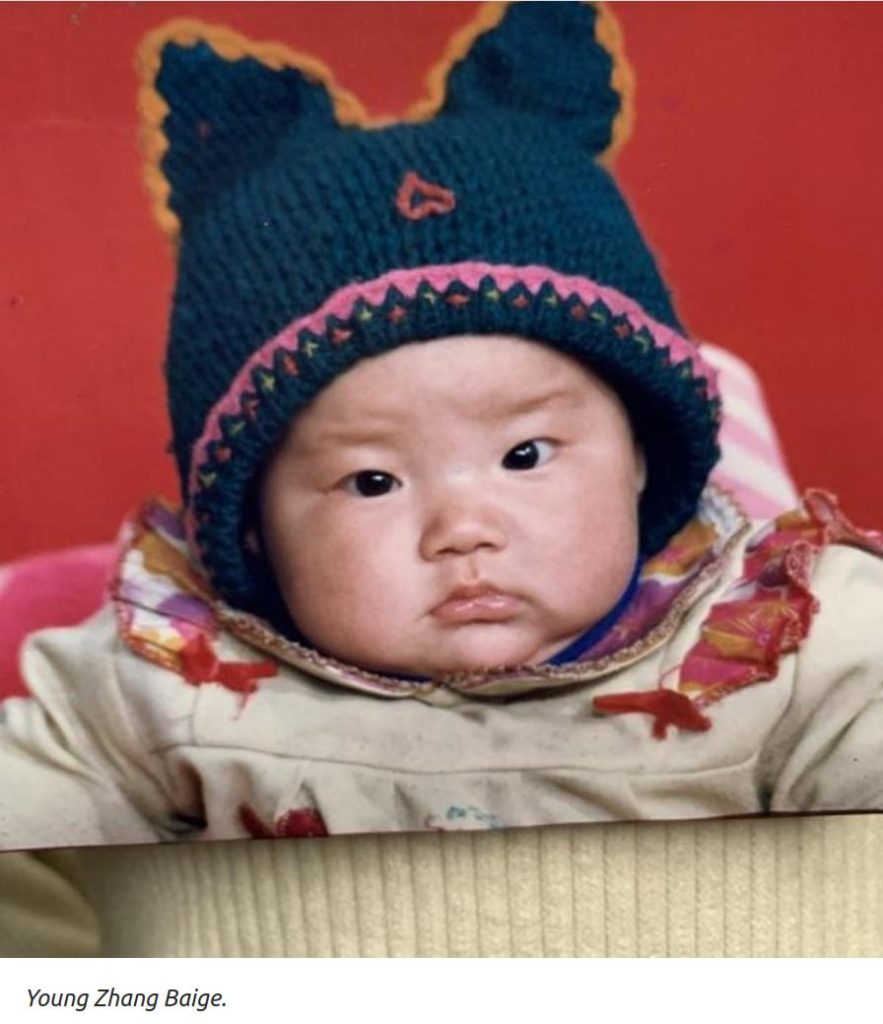
“My father’s family is not wealthy, to raise me actually added to his burdens,” Zhang Baige said. “He also did not have any experience raising a child. It was hard for him, but he insisted.”
The man took on several jobs simultaneously to make a living — collecting waste, digging plants to be sold, herding sheep and working at construction sites.
“As a teenager, I remember being ashamed of him collecting waste. To respect my feelings, my father would do it late at night so I wouldn’t know.”
Although Zhang Baige did not attend college after high school, she worked hard — as a waitress, a cashier and peddler — until she opened her own cosmetics company in Guangzhou and made a fortune.
To spend more time with her father, who is now 75 years old, Zhang Baige ended her business in Guangzhou to travel around the country with him. He always likes to see the world outside home.
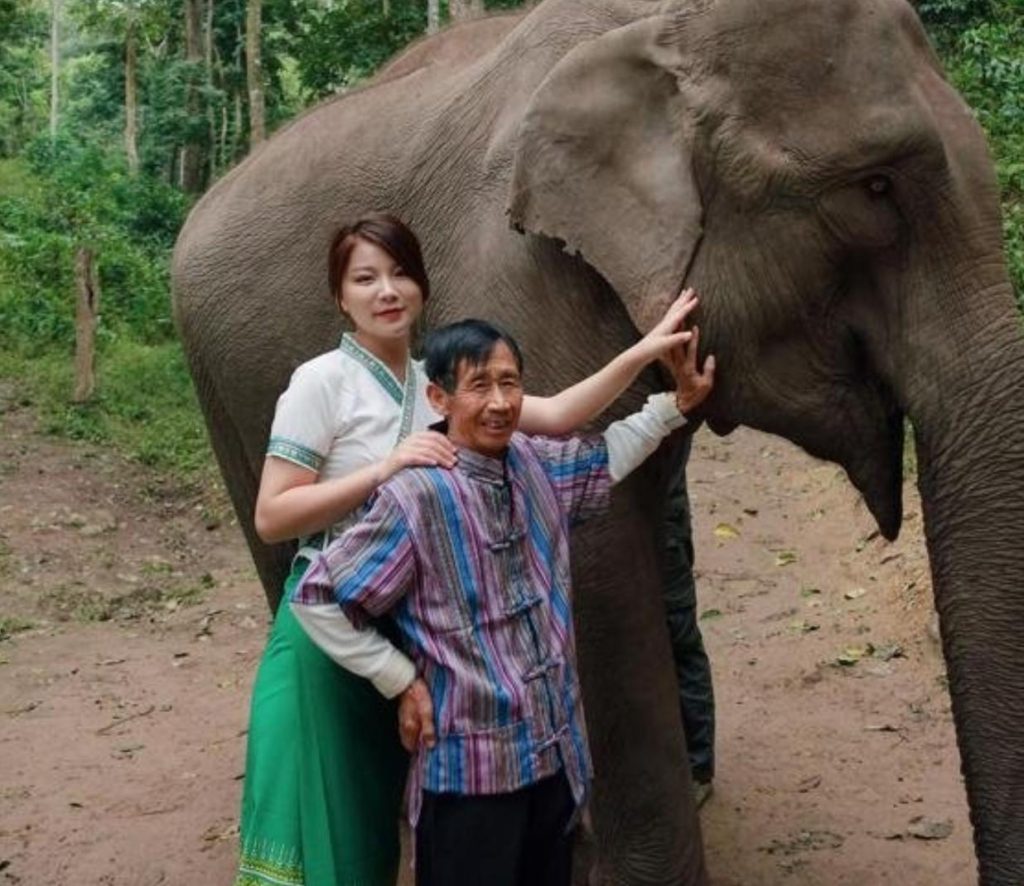
Zhang bought a motorhome with about 660,000 yuan ($97,500), and from May last year the two have journeyed from Henan province, traveling through Shaanxi and Sichuan provinces, an then to the Tibet and Xinjiang Uygur autonomous regions. They typically spend a month in a province.
People are touched by their story after watching a series about their journey, which has been shared by Zhang Baige online.
Netizens are impressed, with comments such as, “A kind father and a grateful daughter”, “You’re unfortunate but lucky at the same time.”
Back in Luoyang in February, Zhang Baige determine to settle down for a while and record more of the precious time she spends with her father.
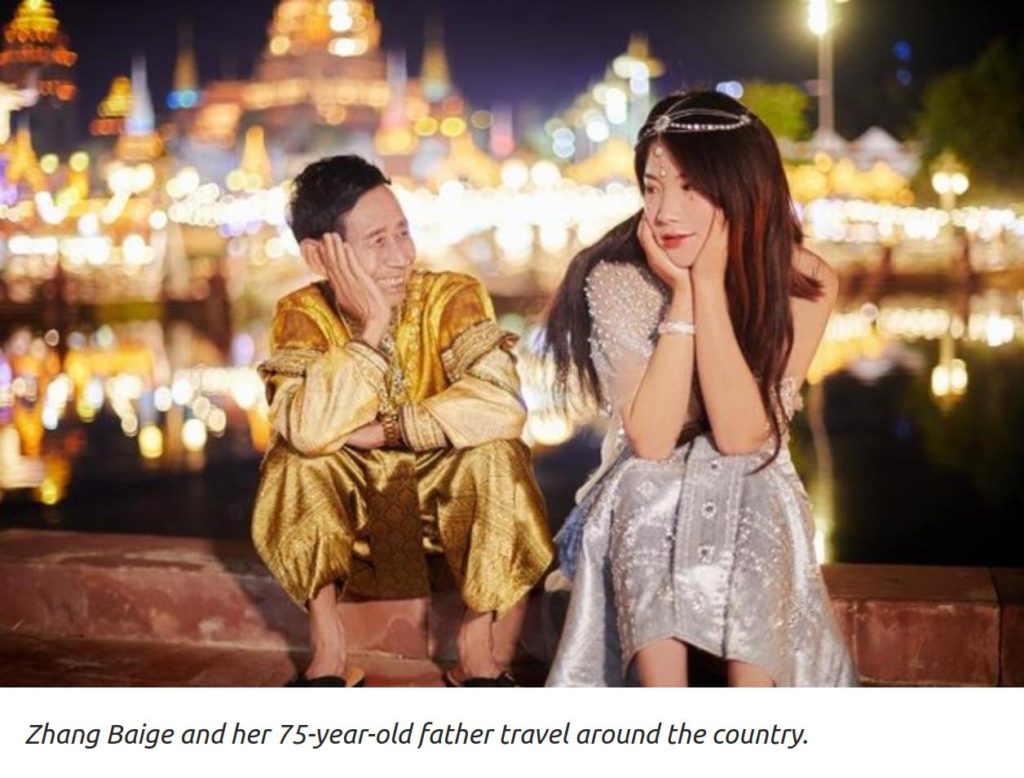
Relief

This one absolutely gives me the chills and you won’t see many like it.
Any guesses on what you are seeing?
They are jewish prisoners being liberated from a death train in 1945. They were en route to concentration camps. They would have likely all been killed, many of them almost immediately.
Allied soldiers intercepted it and let them all free.
This train appears to be mostly women and children. Although 6 million Jews were killed, many millions more were also offed because of the insatiable hatred of one man and his supporters.
By the time this photo was taken, the passengers knew exactly what this train meant.
You are staring at “the moment” these people realized they wouldn’t be dying in a group execution.
It’s an incredible photo. And I can’t even fathom the relief they felt. Relief isn’t even a good enough word.
Presence of mind
Teacher addresses a student and asks: “How many kidneys do we have?”
“Four!”, The student responds.
“Four? Haha,” The teacher was one of those who took pleasure in picking on his students’ mistakes and demoralizing them.
“Bring a bundle of grass, because we have an ass in the room,” the teacher orders a front bencher.
“And for me a coffee!”, the student added.
The teacher was furious and expelled the student from the room.
The student was, by the way, the humorist Aparicio Torelly Aporelly (1895-1971), better known as the “Baron de Itararé”.
On his way out of the classroom, the student still had the audacity to correct the furious teacher:
"You asked me how many kidneys ‘we have’. We have four: two of mine and two of yours. ‘We have’ is an expression used for the plural. Enjoy the grass.”
Life demands much more understanding than knowledge. Sometimes people, because they have a little more knowledge or ‘believe’ that they have it, feel they have the right to underestimate others.
Son and cat relationship

Generally my cat and my son have a one-way relationship. My son tries to love the cat (a little too roughly) and the cat escapes his grasp and goes and sits up high in the cat tree while glowering. I try to run interference in case one day my cat loses patience but so far I had been in luck and my cat was relatively passive.
My son came down with the flu and had the hardest time falling asleep because he couldn’t breathe and would wake up crying every half hour.
My husband and I were exhausted and cranky and slowly losing our minds.
One day as I tried to put him down for a nap on our bed our cat jumped up too.
Not wanting to deal with another fur tussle with my son I tried to kick him off. He just sat there resisting all my attempts to shove him off.
My son sat up and wrapped his arms around my cat and instead of running off like he normally does, he lay flat and curled his tail around my son.
Thanks to the combination of warmth and purring, my son was asleep in 30 seconds.
My cat stayed in that position for two hours as my son slept for the first time in days.
It may not seem like such a huge deal to most but I know that this tired mom was eternally grateful to the love my cat showed my son.
Good Deeds Should Be Remembered
The incident occurred in Texas, at Viterford Prison. One of the guards who guarded the cells on that floor suffered a heart attack. As a result, eight prisoners managed to pick the lock and open the cell door to help him.

Handcuffed, some of them tried to help the guard with first aid, while others screamed and banged on the walls to draw attention to themselves . Finally they succeed, an ambulance arrived quickly and the man survives.
When asked why they did this, the prisoners said that the guard was a “good man.”
Fiasco Horror!
On Sunday our washing machine broke down. On Monday my husband went to Lowe’s and purchased this new front load washing machine. We thought it was the “new and cool” type of washing machine and didn’t think anything of it. We spent that evening installing it with the kids underfoot. We told them several times that they were not to touch it. They all replied “OK.”
Early Tuesday morning we were woken up by our four-year-old son who was crying so hard he could barely talk. As I was trying to understand what he was saying, my husband flew out of bed and down the stairs. It was then that the realization hit.
He had said: Kloe. Inside. Washer.
By the time we reached the laundry room in the basement, my three-year-old daughter Kloe was LOCKED inside the airtight washing machine. It was tumbling and filling with water. She was screaming but you couldn’t hear her.
We were able to quickly stop it and unlock the door and get her out. Aside from a couple of small bumps on her head and wet clothes, she was fine.
After going through all the “what if‘s” and “could have’s” we know we are very blessed and God had mercy on our sweet daughter.
I post this because I can honestly say we did not realize the danger of this machine. We are continually surprised at the new, inventive ways our kids come up with to try and die. And this was definitely a new one.
I took this picture after we secured the door shut with a child safety lock.

We also found a child lock feature on the settings that, as long as it is engaged, will not allow the washing machine to start. But it does not lock the door. We hadn’t even used the machine yet so we hadn’t looked at any of the settings. Also, it obviously took two curious kids to pull this off. I want to encourage anybody who has this type of front loading washing machine and small children, or even grandkids who visit, to lock the door with a child safety lock and always keep the child lock setting on!
I realize that there are ways we could’ve prevented this from happening. This is the season for swimming pool accidents and kids being left in hot cars and all sorts of other horrible accidents. And that’s what most of them are. Accidents. Shaming the mom doesn’t do anyone any good. We need to be open and honest about our mistakes to help one another keep our kids safe. And trust me, that mom is already beating herself up enough.”
More views of America
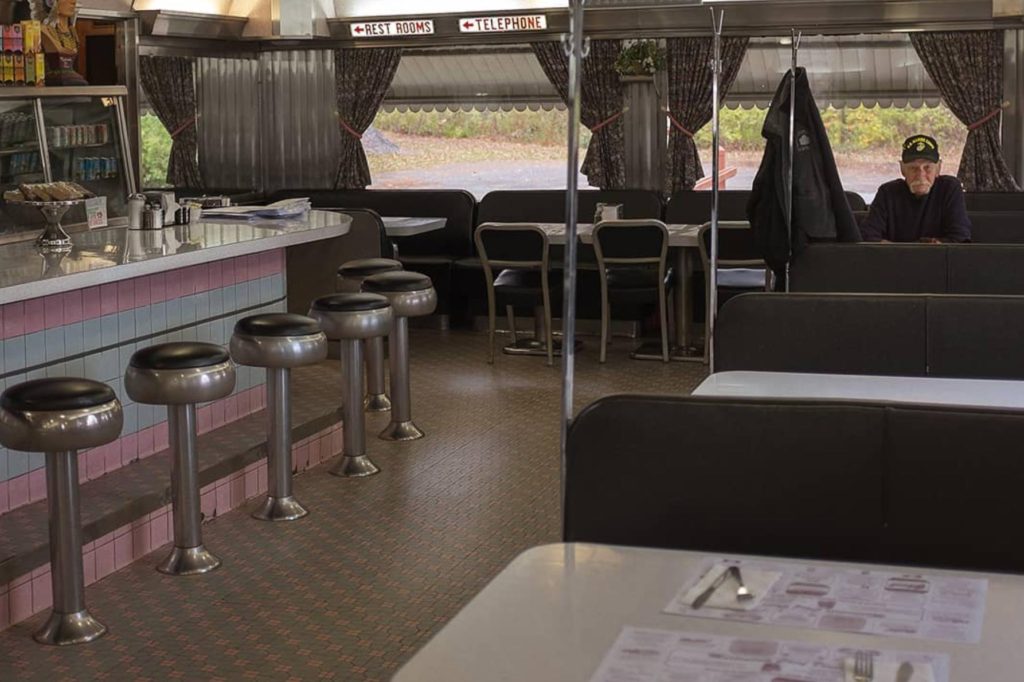


How to make things happen
Asleep on a stranger’s driveway.
Sleeping on a pile of hoses.
That’s how we found our 15 year old son, Micah, earlier this week.

Micah decided to open a power washing service. He took $500 he’s saved from birthday money and chores and bought a nice power washer. He wanted to get paid according to his efforts during his work this summer. He can’t drive yet so he had to figure out transportation. We told him we can pick up and drop off.
He planned to knock on doors all day on Saturday and gets the “yeses” while wading through the sea of “no’s”.
Monday to Friday he does one to two jobs per day. He built a spreadsheet to track the revenue. His buddy helped open a sign-up genius webpage for customers. He’s built a journal of all the reasons people say ”no” and we talk at night about the way to politely answer them. He started jotting them down and memorizing them.
We’ve talked a lot about the heart behind selling a service with integrity versus just closing deals.
It’s a deep belief in your service. Memorizing ways to overcome objections by giving new information versus manipulating.
But here’s the the thing that’s an encouragement for us all.
Millions of people get great training.
Millions of people have great ideas.
Millions of people whiteboard the ideas.
Millions of people buy equipment.
Millions of people set goals and get excited.
Millions of people have “motivation”.
Few people take time to wake up early and go put in a full day of work. Then a full week of work. Then a full summer of work.
Beefy Greek Pita Folds
Enjoy these delicious pita bread sandwiches packed with ground beef and veggies – Greek dinner ready in just 20 minutes!

Ingredients
- 1 lb lean (at least 80%) ground beef
- 1 small onion, cut in half lengthwise, sliced
- 3 cloves garlic, finely chopped
- 1 teaspoon dried oregano leaves
- 1/2 teaspoon salt
- 1/4 cup sliced ripe olives
- 1/2 cup finely chopped peeled cucumber
- 1/2 cup chopped seeded tomato
- 1 cup Yoplait® All Natural Fat Free plain yogurt (from 32 oz. container)
- 1 teaspoon dried dill weed
- 4 soft Greek-style pita breads (6 or 7-inch), heated
Steps
-
1In 10-inch skillet, cook ground beef, onion, garlic, oregano and 1/4 teaspoon of the salt over medium-high heat 5 to 7 minutes, stirring frequently, until beef is thoroughly cooked. Drain. Stir in olives.
-
2Meanwhile, in medium bowl, stir together cucumber, tomato, yogurt, dill and remaining 1/4 teaspoon salt.
-
3On each of 4 individual serving plates, Spoon 1/4 of beef mixture on half of each pita. Top each with yogurt mixture; fold other half of pita over filling. Serve with remaining yogurt mixture.
Physarum polycephalum
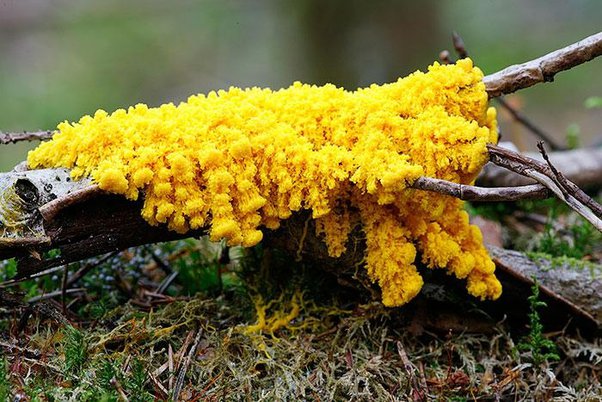
Pictured above is Physarum polycephalum, also known as the “many-headed slime”, a type of protist, and, specifically, a slime mold. The term “slime mold” doesn’t refer to a specific single group, but it is a broad term for several kinds of eukaryote which behave similarly.
Anyway, Physarum has – astonishingly – a basic form of intelligence, despite having no brain and only comprising a single many-nucleic cell. Here are some of the amazing things this slime can do.
- It can solve mazes. A P. polycephalum placed in a plastic maze will extend forth hundreds of tendrils, exploring all possible paths until it finds one which leads to food. It then retracts all the tendrils leading to dead ends. Moreover, it knows which way is quickest. If there are multiple routes to the reward, it’ll retract the (even slightly) longer one.
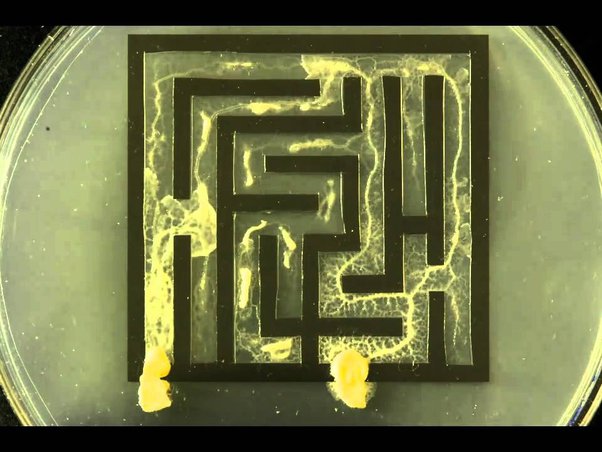
- It remembers. When the mold is solving a maze, it leaves behind a trail of slime wherever its tendrils reach. Using this slime, the Physarum avoids the paths it has already taken. This is essentially a creative, albeit rudimentary, analogue to memory – one that is in external, material form.
- It mimics transport networks. A P. polycephalum was placed in a plastic enclosure the shape of Tokyo, Japan. Bits of food were placed where the major transport hubs would be in real Tokyo, and the slime mold – knowing which ways were fastest, created a replica of the city’s rail networks using its tendrils.

- It learns and keeps track of time. A team of scientists – including the one who did the maze experiment, put this slime mold into a long groove, letting it move along the groove. However, every 30 minutes – they decreased the temperature and the humidity (slime molds thrive in hot, moist conditions). The mold slowed its pace to use less energy. After a while, the scientists stopped. Sure enough, the polycephalum kept slowing every 30 minutes, showing it could both learn and keep time.
- It’s a healthy eater. Another experiment had the slime molds in the middle of a circular clock face. At each mark in the clock, a different food was placed. However, some of them were made up of the healthiest ratio of carbs to protein, while others weren’t. All of the slimes selected the optimal foods.
An astonishing organism if there ever was one. So unusual that this creature is so obscure, for it certainly has some amazing stories to tell.
Messages

“My husband would send me flowers on my birthday every year.
I’ve had a very hard time with his passing. I knew he wasn’t going to be around this year for my BD and I was “okay” with that, I knew I wasn’t going to receive my flowers… two days before my birthday there was a knock on my door and yes, I got flowers.
My brother-in-law had a dream that my husband told him that he needed to get flowers for me.
He says he woke up and said “ok you want flowers for your lady I’ll get her, her flowers” .
He didn’t know my husband would do that for me.
My brother-in-law lives in another city so he didn’t know it was going to be my birthday either.
I had fresh flowers on my 40th birthday from heaven, back in April’22″
Bryan Ferry Nuits de Fourviere Live in Lyon – Like a hurricane HD
Enjoy this rendition of the Neil Young classic.



Thanks for the Bryan Ferry doing Like A Hurricane!
Created an account just to thank you. Seemed like the least I could do.
Well, thank you for that! A big hearty thanks from MM!
Watching the Bryan Ferry vid, the background reminds of the explosion last night where Dugina died….. Some synchronicities? Weird.